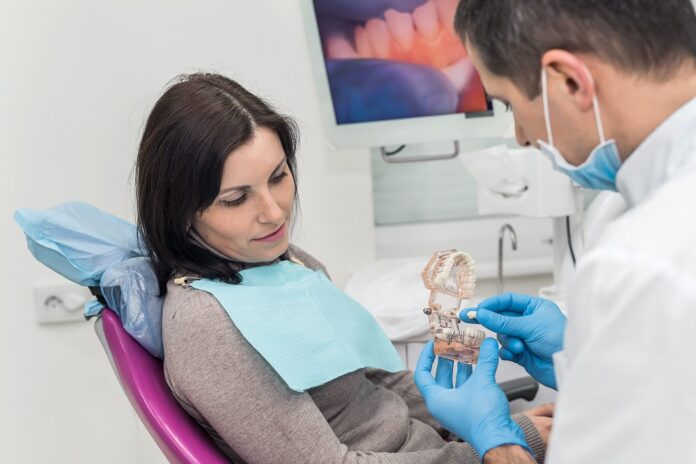Dental crowns are a common dental solution for a wide range of dental issues, from tooth decay to cosmetic concerns. But for those who have never had a dental crown before, the process can seem daunting. This is why we’ve put together a detailed guide that covers everything you need to know before getting a dental crown. Keep reading to learn more about this dental procedure and how it can benefit you.
What Does a Dental Crown Do?
Dental crowns are used to cover and protect damaged or weakened teeth. They can also be used for cosmetic purposes, such as to improve the appearance of discolored or misshapen teeth. Crowns are commonly made of porcelain or ceramic to blend in seamlessly with your natural teeth.
During your appointment, your dentist will look at the shape of your tooth, its size, the extent of decay or damage, and any other factors to decide if a crown is necessary. During this evaluation, they’ll take x-rays to get a better view of the inside of your teeth and determine what type of crown would be best for you. Then, they’ll discuss the options available to you and help you decide on a type of crown that will meet your needs. They may also suggest additional treatments such as root canals or fillings to restore the strength of your teeth before placing a dental crown.
In some cases, your dentist may be able to place the crown during the same appointment. In other cases, it may take multiple visits in order to place a dental crown depending on the complexity of your case and type of procedure needed. Your dentist will discuss all of this with you before beginning any work.
Learn About the Different Types
With cosmetic dentistry, there are several types of dental crowns available, including porcelain-fused-to-metal, all-ceramic, all-metal, and resin. Each type of crown has its own pros and cons and is best suited for different dental conditions. Your dentist will discuss the different options with you and help you choose the right type of crown for your specific needs.
The pros and cons of different types of dental crowns vary depending on the type you choose. Porcelain-fused-to-metal crowns are very strong and durable, but they may be more visible than all-ceramic or resin options. All-metal crowns provide maximum strength, but they can be difficult to match with other tooth colors. All-ceramic crowns are less visible and can be matched to existing tooth color, but they may not be as strong as some of the other options. Resin crowns are the least expensive option, but may not last as long as metal or ceramic ones.
Ultimately, it’s best to talk to your dentist about the pros and cons of each type of dental crown before deciding which is best for your situation.
Preparing for the Procedure
Getting a dental crown usually requires two dental appointments. During the first appointment, your dentist will prepare your tooth for the crown by removing any damaged or weakened parts and shaping it to fit the crown. A mold will then be taken of the tooth and sent to a dental laboratory where the crown will be fabricated. In the meantime, you will have a temporary crown fitted over the prepared tooth.
During the second appointment, the temporary crown will be removed, and the permanent crown will be placed and adjusted for a perfect fit. The process shouldn’t take any more than an hour. Before you know it, you will be walking out of the dentist’s office with a brand-new smile!
Maintain Good Oral Hygiene
It’s important to maintain good oral hygiene to ensure your dental crown lasts for years to come. Brush and floss regularly and avoid chewing on hard objects or foods that could damage your crown. Regular dental visits are also important to ensure the crown and surrounding teeth remain healthy.
When it comes to caring for your dental crown, there are a few things you should never do. Never try to pick at or adjust the crown yourself as this can cause further damage and compromise its fit and stability. Additionally, avoid chewing hard foods or objects with your dental crown as this can also cause damage. Finally, never put off regular dental visits as your dentist will be able to check the crown and make sure everything is in good condition. Following these tips can help keep your crown looking great for years to come.
Expect Some Discomfort
After your dental crown is placed, it’s normal to experience some discomfort, such as sensitivity to hot and cold temperatures or soreness in the gum area. This discomfort should subside within a few days, but if it persists or becomes severe, contact your dentist right away.
Getting used to a new dental crown can take some time, but with proper care and maintenance it should feel like part of your smile in no time. With time and patience, your new crown will become more comfortable until it feels like your own natural tooth.
Getting a dental crown can seem overwhelming, but with the right information and preparation, the process can be made much smoother. Understanding why you need a dental crown, the types available, the procedure, how to maintain it, and what to expect can help ensure a successful outcome. If you have any further questions or concerns, don’t hesitate to reach out to your dentist for professional advice.















